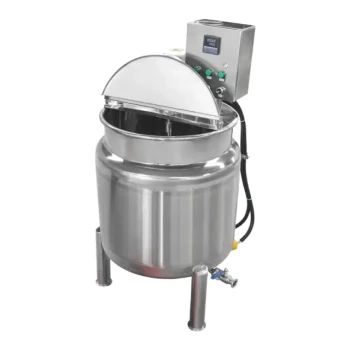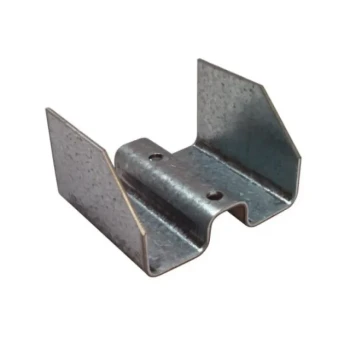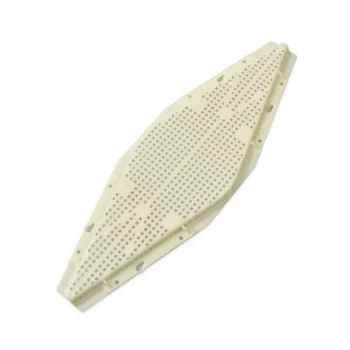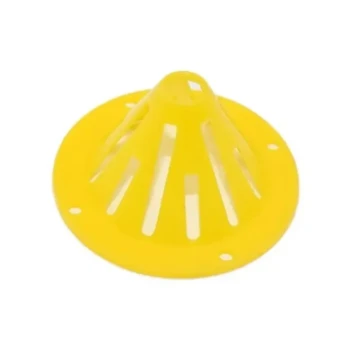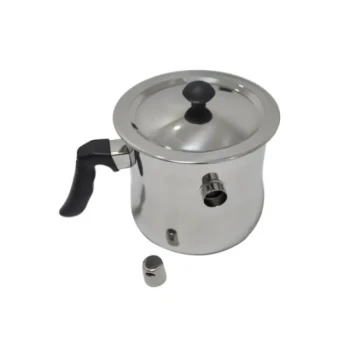A honey flow typically lasts for a period ranging from two to several weeks. This is the critical window when an abundance of nectar-producing plants are in bloom, allowing a healthy honey bee colony to gather far more nectar than it needs for its daily survival and convert it into a surplus of honey.
The duration and intensity of a honey flow are not fixed; they are entirely dependent on local environmental conditions. Understanding your region's specific plant bloom cycles and prevailing weather patterns is the key to anticipating and managing this vital period for your bees.
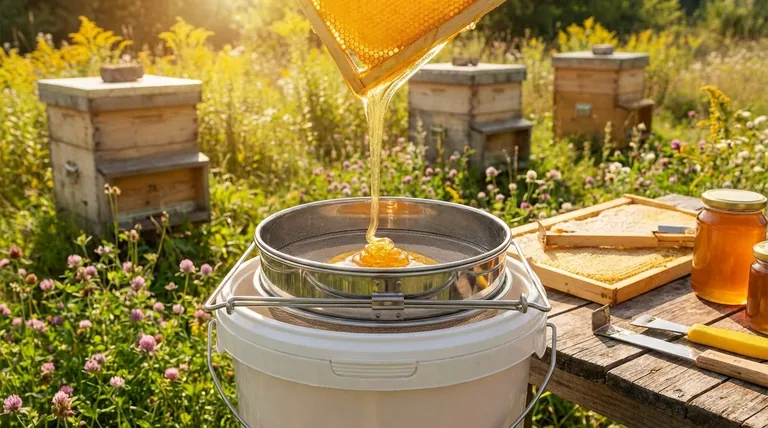
What Defines a True Honey Flow?
A honey flow is more than just a time when bees are foraging. It's a specific period of overwhelming abundance that fundamentally changes the colony's behavior and potential.
Beyond Simple Foraging
During most of the year, bees are in a state of maintenance, collecting just enough resources to feed the brood and sustain the adult population.
A honey flow occurs when the incoming nectar dramatically exceeds the colony's daily consumption needs. This surplus is what becomes the honey harvest.
The Nectar Equation
The simple equation is: Nectar Income > Colony Consumption. When this balance tips heavily in favor of income, the bees are triggered to begin mass honey production and storage.
Key Botanical Triggers
A flow is usually tied to the mass blooming of a single, dominant plant species. Common examples include clover, alfalfa, basswood (linden trees), or goldenrod, depending on the region. The limited blooming period of these plants is what defines the flow's duration.
The Primary Factors Dictating Duration
The "two to several weeks" window is an average. The actual length in your area is dictated by a sensitive interplay of environmental factors.
Factor 1: Plant Bloom Cycles
The single most important factor is the botany of your local area. A crop like clover may bloom for many weeks, creating a long, steady flow. In contrast, a tree like the black locust may bloom intensely for only 10-14 days, creating a very short and powerful flow.
Factor 2: Weather Conditions
Weather is the great moderator of any honey flow. Nectar secretion from plants is highly dependent on ideal conditions.
Bees need warm, sunny, and relatively calm days to fly. A week of rain and cold temperatures in the middle of a major bloom can effectively shut down the honey flow, regardless of how many flowers are available.
Factor 3: Geographic Location and Climate
Regional climate patterns create different types of flows. Northern climates may experience one or two short, intense flows during the summer.
Subtropical and tropical climates, however, might experience multiple, smaller honey flows throughout the year as different plants cycle through their blooming periods.
Common Pitfalls and Limiting Factors
Even with abundant flowers, a successful honey harvest is never guaranteed. Understanding what can go wrong is critical for effective management.
The Risk of a "Nectar Dearth"
A nectar dearth is the sudden stop of a honey flow, often caused by high heat and dry conditions that cause flowers to cease producing nectar. This can leave a rapidly expanding colony without an income source, forcing them to consume their freshly stored honey.
The "Rainout" Effect
Consistent rain during a peak bloom is the beekeeper's enemy. Not only does it keep the bees inside the hive, but it can also wash the nectar directly out of the flowers, wasting the opportunity.
Insufficient Colony Strength
A powerful honey flow is useless to a weak colony. A hive must have a massive population of forager-age bees to take advantage of the abundance. A small or recovering colony may use the entire flow just to build up its own population, storing no surplus honey.
How to Prepare for Your Local Flow
Observing your hives and local environment will tell you everything you need to know about preparing for this critical time.
- If your primary focus is maximizing honey production: Ensure your colonies are strong and have ample storage space (supers) before the main flow begins to prevent swarming and give them room to work.
- If your primary focus is colony health and sustainability: Monitor hive stores closely after the flow ends to determine if supplemental feeding is necessary to prevent starvation during a subsequent dearth.
- If you are a new beekeeper: Connect with local beekeeping associations to learn the typical timing and primary nectar sources for the honey flows in your specific area.
Ultimately, successful honey flow management comes from observing your bees and understanding the rhythm of your local landscape.
Summary Table:
| Factor | Impact on Honey Flow Duration |
|---|---|
| Plant Bloom Cycles | Dominant species (e.g., clover, basswood) define the flow window. |
| Weather Conditions | Sunny, warm days extend it; rain/cold can halt it entirely. |
| Colony Strength | Strong hives with ample foragers can fully exploit the flow. |
| Geographic Location | Northern climates: short, intense flows; subtropical: multiple flows yearly. |
Is your operation ready for the next honey flow? A successful harvest depends on strong colonies and the right equipment. HONESTBEE supplies commercial apiaries and distributors with high-quality, durable beekeeping supplies—from hive components to protective gear—through our wholesale-focused operations. Ensure your bees have the tools they need to capitalize on every nectar flow. Contact HONESTBEE today to discuss your wholesale needs and optimize your harvest potential.
Visual Guide

Related Products
- Stainless Steel Double Layer Honey Strainer Sieve Filters
- Automatic Honey Flow Beehive 4 Frame Mini Hive for Beekeeping
- 10L Stainless Steel Electric Honey Press Machine
- Plastic Honey Gate Spout with Wing Nut for Beekeeping Honey Bucket
- Inverted Squeezable Honey Jar with No Drip Flip Top Cap for Easy Pouring
People Also Ask
- What mesh sizes are commonly used in double sieve honey strainers? Achieve Clean, Raw Honey Efficiently
- How do you strain honey at home? A Step-by-Step Guide to Pure, Raw Honey
- What is a steel strainer used for? A Kitchen Essential for Precision & Hygiene
- What is a honey sieve? The Key to Clean, High-Quality Honey for Your Apiary
- What makes polyurethane foam environmentally friendly? The Surprising Benefits of a Durable, Inert Material











